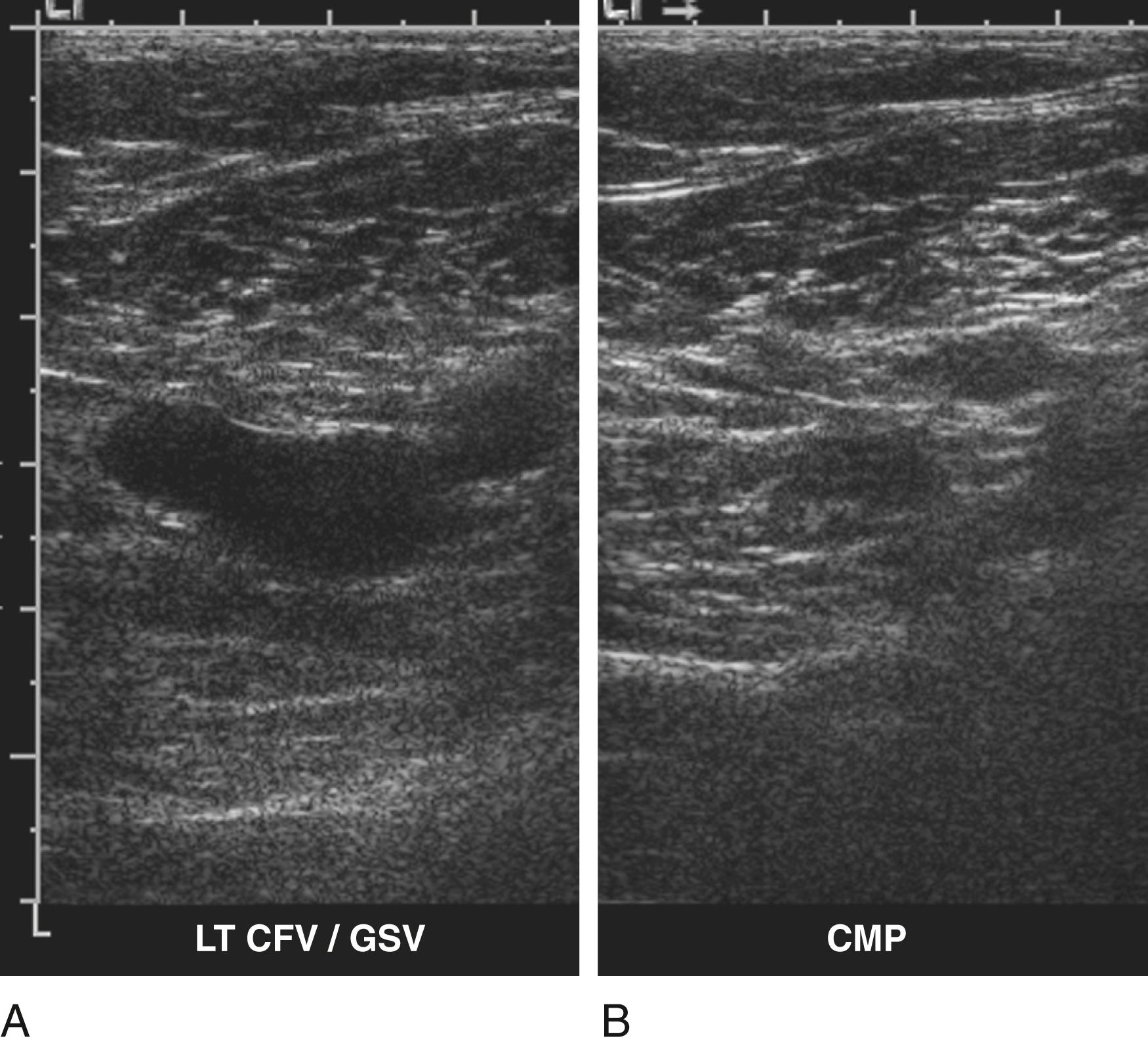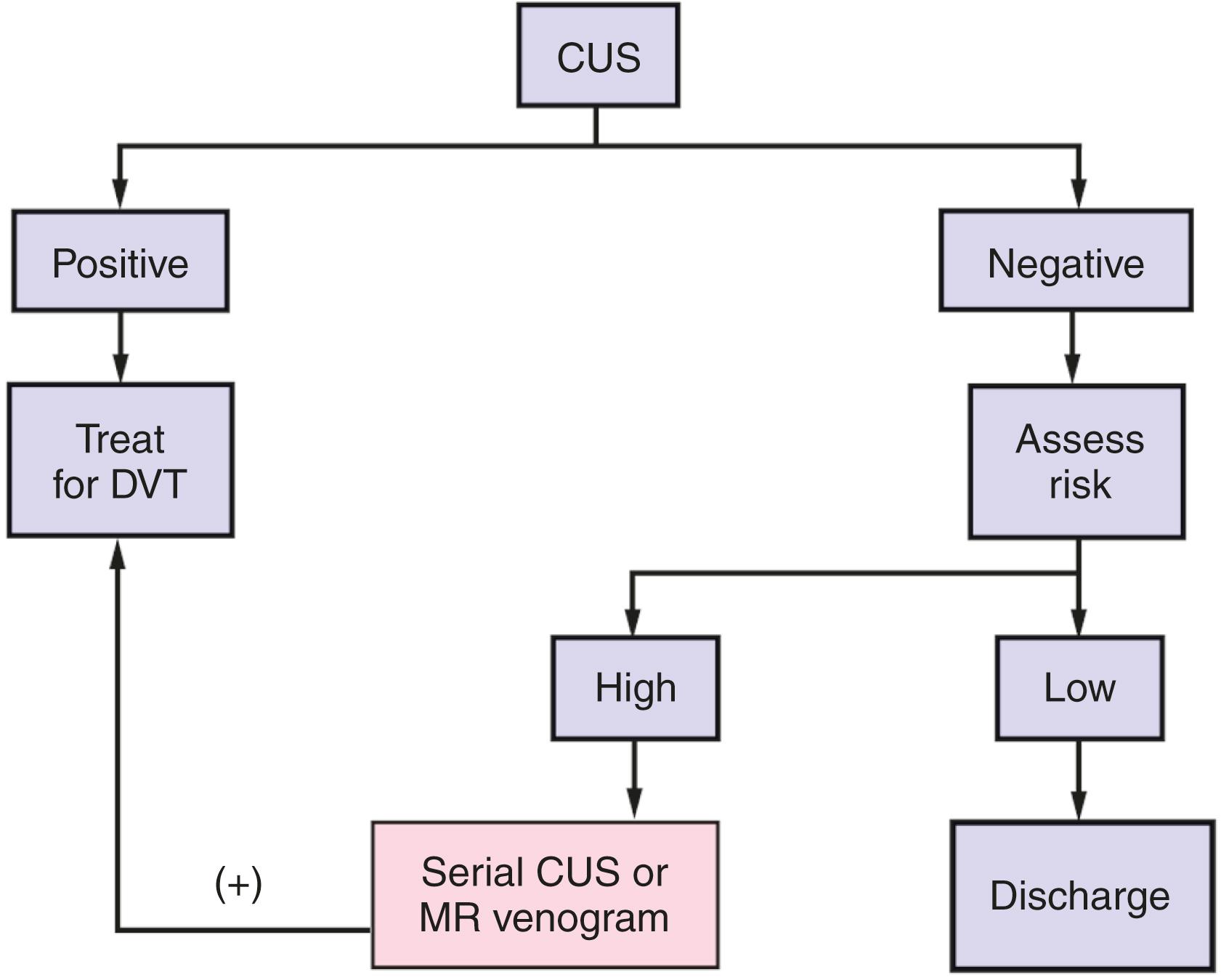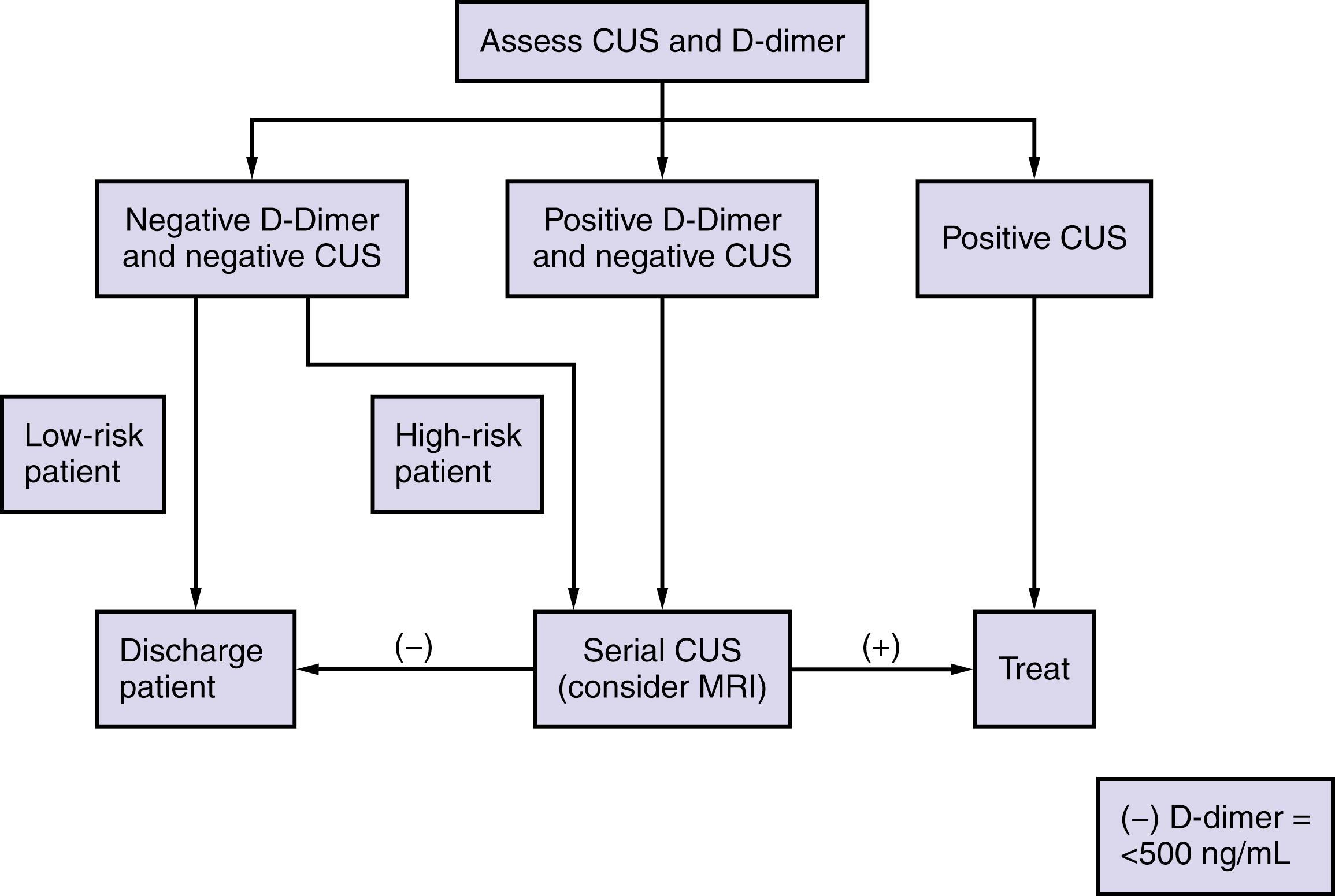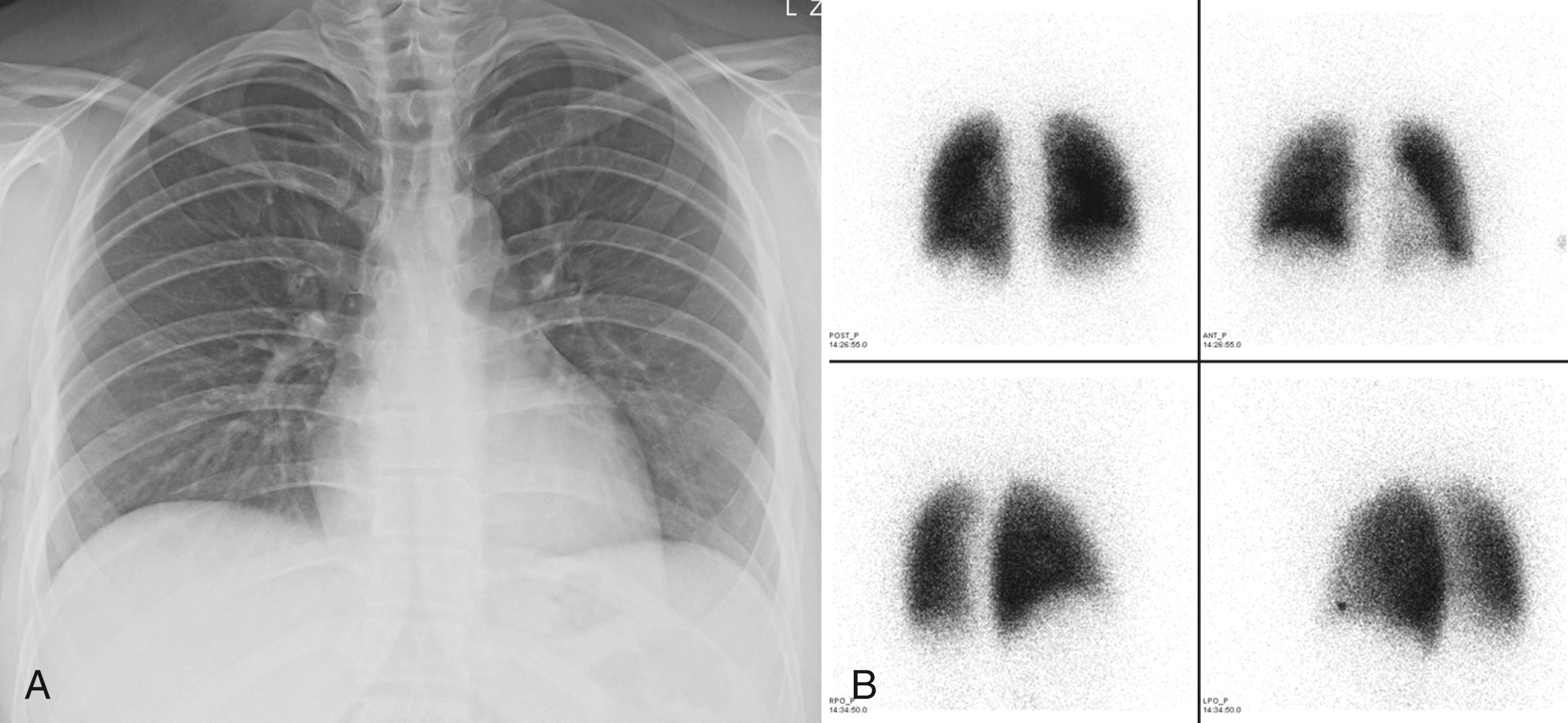Physical Address
304 North Cardinal St.
Dorchester Center, MA 02124
The Centers for Disease Control and Prevention (CDC) Pregnancy Mortality Surveillance System reports that pregnancy-related deaths in the United States have risen from 7.2 per 100,000 live births in 1987 to 17.3 per 100,000 live births in 2013 and stabilized through 2015. Although the plurality of such deaths can now be attributed to cardiac disease, venous thromboembolism (VTE) accounts for almost 10% of pregnancy-related deaths in the United States.
In a retrospective cohort study of 268,525 patients over a 19-year period, the prevalence of VTE was reported to be 1 per 1627 births; of these cases, 77% involved deep venous thrombosis (DVT), and 23% involved acute pulmonary embolism (PE). No antecedent history of VTE was present in 86% of these patients. Among nonpregnant adults who have fatal PE, 65% (95% confidence interval [CI], 40.8 to 84.6) die within 1 hour after onset. These findings underscore the need for a high index of suspicion, a sensitive and rapid diagnostic algorithm, and expeditious initiation of treatment in pregnant women with suspected VTE.
Among pregnant women, the DVT is localized to the lower extremities in 98.4% of cases, with the left leg affected in up to 80% of cases. The occurrence of DVT is more common in the antepartum period than in the postpartum period (74% versus 26%; P < .001), with a mean gestational age at diagnosis of 16.8 ± 2.4 weeks. However, the risk per day is greatest in the puerperal period. Nearly 50% of antepartum DVT cases are detected by 15 weeks. However, when compared to nonpregnant women not using contraception, the risk of venous thromboembolism rises exponentially as pregnancy progresses and reaches peak risk in the peripartum–early postpartum period. Most patients with PE are diagnosed in the postpartum period (60.5%) and are strongly associated with cesarean delivery (relative risk, 30.3; P < .001).
Data collected from over 64 million pregnancy-related hospitalizations in the United States during the 1994 to 2009 period showed a 14% increase in the rate of overall VTE-associated hospitalizations, with the upward trend largely attributable to increases in the rate of diagnosed PE.
Usually, VTE is a disease of aging, affecting less than 1 in 10,000 healthy women before 40 years of age. However, the risk for VTE is increased at least 6-fold in pregnancy. Compared with the nonpregnant state in women of reproductive age, pregnancy represents a prothrombotic state because it is associated with significant elevations in plasma concentrations of fibrinogen and factors VII, VIII, and von Willebrand factor. , In addition, activity of the anticoagulant factor protein S declines on average to 39% of normal levels in the second trimester and 31% of normal levels in the third trimester. As a consequence, pregnancy is associated with an increase in resistance to activated protein C. The net effect of these changes is an increase in thrombin generation, as measured by increased levels of fibrinopeptide A and the thrombin-antithrombin complex. Protein S levels drop even further after cesarean delivery or infection, helping to account for the high prevalence of PE after cesarean delivery. Levels of plasminogen activator inhibitor (PAI)-1, which inhibits clot lysis, increase up to 5-fold during pregnancy, whereas placental-derived plasma PAI-2 values, which are negligible before pregnancy, reach high concentrations in the third trimester. , Thus pregnancy is associated with increased thrombin-generating potential, decreased endogenous anticoagulant effects, and impaired fibrinolysis.
The occurrence of VTE in pregnancy is also promoted by venous stasis in the lower extremities resulting from compression of the inferior vena cava and pelvic veins by the enlarging uterus, compression of the left common iliac vein by the right iliac artery, , and increases in deep vein capacitance caused by increased circulating levels of progesterone and local endothelial production of prostacyclin and nitric oxide. ,
Additional risk factors for VTE, not specific to, but potentially more common in, pregnancy, include antenatal hospitalization, vascular trauma, infection, obesity, severe proteinuria, and prolonged bed rest. Maternal age greater than 35 years doubles the risk for VTE in pregnancy. One study found that among patients undergoing cesarean delivery who developed PE, 36% were older than 35 years of age and 55% were obese (body mass index, >29). When BMI >25 kg/m 2 is combined with antepartum immobilization, the odds ratio of antepartum and postpartum venous thromboembolism is 62.3 (95% CI, 11.5 to 337.6). Antiphospholipid antibody syndrome (APS) is associated with a 1% to 5% risk for VTE in pregnancy and the puerperium despite thromboprophylaxis. , In a case-control study of 30 pregnant women with VTE versus matched controls who were subsequently analyzed for antiphospholipid antibodies, prevalence of these antibodies was substantially increased in cases compared with controls (27% versus 3%; P = .026).
The presence of an inherited thrombophilia also increases the risk for VTE during pregnancy, particularly in the setting of a personal or strong family history. For example, the factor V Leiden (FVL) mutation is present in 40% of pregnant patients with VTE. , However, because the prevalence of VTE in pregnancy is low (1/1600) and the incidence of heterozygosity for FVL in European populations is high (5%), the actual risk for VTE among gravidas without a personal history of VTE or an affected first-degree relative is less than 0.2% to 0.3%. , With such a history, the risk for VTE in the antepartum or postpartum period is greater than 10%. Similar observations have been made for other common inherited thrombophilias ( Table 54.1 ).
| Thrombophilia | % VTE in Pregnancy | % Thrombophilia in European Populations | RR or OR (95% CI) | Probability of VTE in Patients Without Personal or Family History of VTE (%) | Probability of VTE With a Personal or Strong Family History of VTE (%) | References |
|---|---|---|---|---|---|---|
| FVL (homozygous) | <1 | 0.06 a | 25.4 (8.8–66) | 1.5 | 17 | Gerhardt et al., 2000 Zotz et al., 2003 Friederich et al., 1996 Franco and Reitsma, 2001 |
| FVL (heterozygous) | 40–44 | 5 | 6.9 (3.3–15.2) | 0.26 | 10 | Gerhardt et al., 2000 Zotz et al., 2003 |
| PGM (homozygous) | <1 | 0.02 a | NA | 2.8 | >17 | Friederich et al., 1996 |
| PGM (heterozygous) | 17 | 3 | 9.5 (2.1–66.7) | 0.37 | >10 | Gerhardt et al., 2000 Zotz et al., 2003 |
| FVL/PGM (compound heterozygous) | <1 | 0.15 | 84 (19–369) | 4.7 | NA | Gerhardt et al., 2000 Zotz et al., 2003 |
| Antithrombin deficiency | 1–8 | 0.04 | 119 | 3–7.2 | >40 | Gerhardt et al., 2000 Zotz et al., 2003 Friederich et al., 1996 Franco and Reitsma, 2001 Carraro et al., 2003 Goodwin et al., 2002 |
| Protein S deficiency | 12.4 | 0.03–0.13 | 2.4 (0.8–7.9) | <1 | 6.6 | Gerhardt et al., 2000 Zotz et al., 2003 Friederich et al., 1996 Goodwin et al., 2002 |
| Protein C deficiency | <10 | 0.2–0.3 | 6.5–12.5 | 0.8–1.7 | NA | Gerhardt et al., 2000 Zotz et al., 2003 Friederich et al., 1996 Conard et al., 1990 |
a Calculated on the basis of the Hardy-Weinberg equilibrium.
The presence of thrombophilia can also affect the risk for recurrence of VTE among pregnant women. Brill-Edwards and colleagues prospectively followed 125 pregnant women with a prior VTE, 95 of whom were tested for thrombophilias including FVL; the prothrombin G20210A gene mutation (PGM); protein C, protein S, and antithrombin deficiencies; and the antiphospholipid antibodies, anticardiolipin antibodies, and lupus anticoagulant. The authors withheld antepartum thromboprophylaxis but employed it in the postpartum period. They noted an overall antepartum recurrence rate of 2.4% (95% CI, 0.2 to 6.9), but no recurrences in the 44 women without a detectable thrombophilia and a previous VTE associated with a temporary risk factor (among which the authors included pregnancy itself). In contrast, the recurrence risk for VTE among the 25 thrombophilic patients was 16% (four patients) (odds ratio [OR] = 6.5; 95% CI, 0.8 to 56.3). Therefore, it would appear prudent to test pregnant patients who have a history of VTE associated with a transient risk factor (e.g., fracture) for thrombophilias. Similarly, consideration should be given to screening pregnant women who have a strong family history (i.e., an affected first-degree relative) of VTE, particularly if they are likely to be exposed to risk factors such as prolonged immobilization or cesarean delivery.
The clinical signs and symptoms of VTE can be difficult to distinguish from physiologic changes in pregnancy and are neither sensitive nor specific. Indeed, more than 90% of pregnant women in whom the diagnosis of either DVT or PE is suspected are unaffected. Conversely, many of those ultimately diagnosed with VTE do not have classic features. To make an early diagnosis, clinicians must exercise a high index of suspicion and approach the diagnosis in a systematic fashion.
Only about one-fourth of nonpregnant patients with unilateral extremity edema, erythema, warmth, pain, tenderness, and a positive Homans sign—the traditional hallmarks of DVT—prove to have the diagnosis when objective diagnostic tests are performed. The differential diagnosis includes a ruptured or strained muscle or tendon, cellulitis, knee joint injury, Baker cyst, cutaneous vasculitis, superficial thrombophlebitis, and lymphedema. The positive predictive value of these signs and symptoms increases substantially in patients at increased risk. However, no risk-assessment model has been prospectively validated in pregnancy. Chan and colleagues reported three objective variables (“LEFt”: symptoms in the left leg [L]; calf circumference difference ≥2 cm [E]; and first-trimester presentation [Ft]) to be highly predictive of DVT in pregnancy. In their retrospective study of 194 at-risk pregnant women without prior DVT, the condition was never diagnosed when none of the three variables was present (0%; 95% CI, 0 to 4.2). When one or more variables were present, DVT was diagnosed in 16.4% of cases (95% CI, 10.5 to 24.7); with two or three variables, DVT was diagnosed in 58.3% of cases (95% CI, 35.8 to 75.5). Righini and associates evaluated diagnostic performances of the LEFt rule among 157 pregnant women with suspected DVT of whom 13 (8.3%) had the diagnosis confirmed. A DVT was diagnosed in 11.7%, (95% CI, 8.3 to 20.9) of women with at least one of the LEFt criteria, compared with 0% (95% CI, 0.0 to 7.9) with no LEFt criteria present. Le Moigne and associates applied the LEFt clinical decision rule to 96 pregnant women with suspected DVT and observed that women with zero, one, two, and three variables had a corresponding prevalence of DVT of 3%, 9%, 10%, and 75%, respectively. However, because a confirmed DVT occurred in one pregnant woman with no LEFt variables, the authors of this study recommend that the LEFt rule should not be used to rule out DVT in pregnancy without further investigation.
Compression ultrasound (CUS), usually performed in conjunction with color Doppler imaging, is the primary diagnostic modality for evaluating pregnant patients who are at risk for DVT. The test is performed by placing the ultrasound transducer over the common femoral vein, beginning at the inguinal ligament, and then moving down the leg to sequentially image the greater saphenous vein, the superficial and deep femoral veins, the popliteal vein, and the deep calf veins including the anterior and posterior tibial and peroneal veins. Gentle pressure is applied with the probe to determine whether the vein under examination is compressible ( Fig. 54.1 ) The most accurate ultrasonographic criterion for diagnosing DVT is noncompressibility of the venous lumen in a transverse plane. , Direct visualization of echogenic material in the venous lumen and loss of a normal phasic flow pattern are additional supportive findings and are used to diagnose the presence of thrombus in anatomically noncompressible vascular segments such as the iliac veins.

The sensitivity and specificity of CUS for proximal DVT are reported to be 95% and 98%, respectively, using contrast venography as the gold standard. However, the accuracy in detection of isolated calf DVT is lower, largely because of the technical difficulty of visualizing all calf venous branches. A meta-analysis of 463 at-risk patients showed that indeterminate calf ultrasound examination rates range from 9.3% to 82.7%; in patients with diagnostic studies, CUS was found to have a sensitivity of 92.5% (95% CI, 81.8 to 97.9) and a specificity of 98.7% (95% CI, 95.5 to 99.9). Despite clinical concern for proximal propagation of undetected calf vein thrombosis, preliminary studies suggest that a negative single complete ultrasound (including attempted visualization of calf veins) of the lower extremities may be a safe method to exclude DVT in the pregnant population. In a retrospective review of 118 pregnant or postpartum women with suspected DVT and a negative CUS, Le Gal and associates found no recurrent thromboembolic events during a 3-month follow-up period. In a subsequent prospective study of 226 pregnant and postpartum women with suspected DVT, Le Gal and colleagues diagnosed DVT in two of 177 patients (1.1%, 95% CI, 0.3 to 4.0) with a negative CUS during a 3-month follow-up period. In a prospective study of 221 pregnant women with suspected DVT who underwent serial CUS, all 16 (7.2%) diagnosed DVTs were detected on the initial exam and one patient with normal serial studies had PE diagnosed 7 weeks later; incidence of VTE during follow-up was 0.49% (95% CI, 0.09 to 2.71).
Because of the uncertain long-term effects of gadolinium on the fetus, contrast-enhanced magnetic resonance (MR) venography is relatively contraindicated in the pregnant population. In the nonpregnant population, the sensitivity and specificity of noncontrast MR venography for the diagnosis of proximal leg vein DVT have been reported to be 94.7% to 100% and 98% to 100%, respectively. The major advantage of noncontrast MR techniques over CUS is additional assessment of the pelvic veins. In a small series of 24 nonpregnant patients, noncontrast MR venography using a steady-state precession technique yielded diagnostic assessment of calf veins in 81% of patients, with a sensitivity of 68% and specificity of 94% for DVT using contrast venography as the gold standard.
In the nonpregnant population with suspected DVT, a normal D-dimer level in a patient assessed by a clinical prediction rule to have a low pretest probability of having DVT is sufficient to safely exclude DVT with no further diagnostic testing required. However, the role of D-dimer in excluding DVT in pregnancy remains uncertain. The challenges in the application of D-dimer testing relate to the lack of a validated clinical prediction rule for DVT in the pregnant population, elevated D-dimer levels in pregnancy that occur in the absence of DVT, and the lack of prospective studies that validate the safety of this approach. , Morse measured D-dimer values in 48 women, 17 to 36 years of age, at 16, 26, and 34 weeks of gestation and compared these values to those of 34 healthy, nonpregnant controls. This author found a progressive increase in D-dimer concentrations across gestation (191 ± 25 μg/L at 16 weeks, 393 ± 72 μg/L at 26 weeks, and 544 ± 96 μg/L at 34 weeks), all of which were significantly higher than the values in nonpregnant women (140 ± 58 μg/L). A large cross-sectional study of 1343 pregnant women who underwent D-dimer testing at one point during the pregnancy or postpartum period showed a significant increase in D-dimer levels over the course of gestation: 85%, 29%, and 4% of pregnant women in the first, second, and third trimesters, respectively, had a D-dimer level below the normal threshold of 500 μg/L. Increases in D-dimer levels are more pronounced in multifetal pregnancies than in singleton pregnancies. Normalization of D-dimer levels occurred on average at 6 weeks postpartum.
Three prospective studies (n = 389) using a total of seven different commercially available assays evaluated the accuracy of D-dimer testing for the diagnosis of DVT in pregnancy. , , Each study showed D-dimer to be 100% sensitive for DVT, but the number of positive studies was low, and specificities ranged from 6% to 23% using standard cut-points for the different assays. Chan and coworkers suggested that use of higher cut-points than those used in nonpregnant patients can improve the specificity of D-dimer assays for diagnosis of DVT in pregnancy without compromising sensitivity; however, this approach has not been validated in prospective management studies. There has been one case report of a negative D-dimer test in the setting of acute calf DVT in a postpartum woman.
The cornerstone of evaluation for possible DVT in pregnant patients is CUS. A D-dimer assay may be used as a complementary test, but a negative result does not preclude the possibility of DVT. Using CUS as the initial test, patients can be subsequently triaged on the basis of this test result, with clinical risk assessment determining the need for additional evaluations ( Fig. 54.2 ). A positive CUS result prompts treatment. Follow-up of a negative CUS result depends on the patient’s risk category. If it is low, the patient is discharged to routine follow-up. If it is moderate or high, she undergoes serial CUS or, if the index of suspicion is high enough, MR venography.

The diagnostic scheme in Fig. 54.3 uses both CUS and D-dimer testing to triage patients. The combination of a negative D-dimer result in a low-risk patient and a negative CUS study is associated with a very low risk for DVT, and such patients are discharged to routine follow-up. A positive CUS, which is usually associated with a positive D-dimer test, prompts treatment. A negative CUS combined with a negative D-dimer in a high-risk patient (e.g., obese, prior DVT, known thrombophilia) or positive D-dimer test in any patient should be followed by serial CUS, or MR venography, depending on the clinician’s index of suspicion. It should be noted that D-dimer testing is likely to be completely irrelevant in later stages of pregnancy and in puerperal and postoperative patients because of high false-positive rates. Conversely, the unusual occurrence of a false-negative D-dimer result is also a concern. Thus, caution must be exercised with the use of D-dimer assays in this setting, and negative results with high-risk patients should prompt serial imaging.

The diagnosis of recurrent DVT in pregnancy presents a diagnostic challenge because CUS findings remain abnormal after an initial thrombus for up to 1 year in as many as 50% of patients. In this setting, an increase of more than 2 mm in the compressed diameter of a previously involved vein, or a return to abnormal after earlier normalization of vein compressibility, has been reported to provide strong evidence of recurrent proximal thrombosis in the nonpregnant population. Because a single CUS study does not exclude recurrent calf DVT (with potential for extension), performance of serial CUS studies should be considered in this high-risk population. Prandoni and colleagues reported a VTE recurrence rate of 1.3% (95% CI, 0.02 to 4.7) in 150 nonpregnant patients with suspected recurrent DVT and negative serial CUS studies performed at presentation and at days 2 (±1) and 7 (±1).
Dyspnea and chest pain are the two most common symptoms of PE, and they occur in 61% to 81% of pregnant and 55% to 69% of postpartum women with ultimately confirmed PE. , Associated signs and symptoms may include hypoxemia, tachycardia, tachypnea, hemoptysis, and sweating. , Hypotension and syncope are rare and usually indicate massive embolism.
Chest radiography plays an important role in the evaluation of pregnant patients with suspected PE. Although no radiographic findings are sensitive or specific for PE, suggestive features include pulmonary edema and effusions, and focal opacities and atelectasis. In addition, chest radiography can rule out alternative conditions mimicking PE including pneumothorax and pneumonia. However, its primary utility is to select those patients with normal findings who should undergo a ventilation-perfusion (V/Q) scan. A “normal” chest radiograph can increase the percentage of definitive V/Q results (normal and high probability) in the pregnant population to 94% to 96%. In a study of 304 pregnant and postpartum women, patients with normal chest radiographs ( Fig. 54.4A ) were more likely to obtain a diagnostic result with a V/Q scan than with computed tomographic pulmonary angiography (CTPA) (94% versus 70%; P < .01); in contrast, patients with abnormal chest radiographs were more likely to have a higher nondiagnostic study rate on a V/Q scan than with CTPA (40% versus 16.4%; P < .01).

Become a Clinical Tree membership for Full access and enjoy Unlimited articles
If you are a member. Log in here